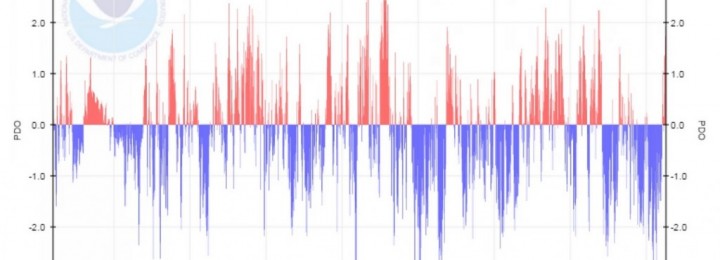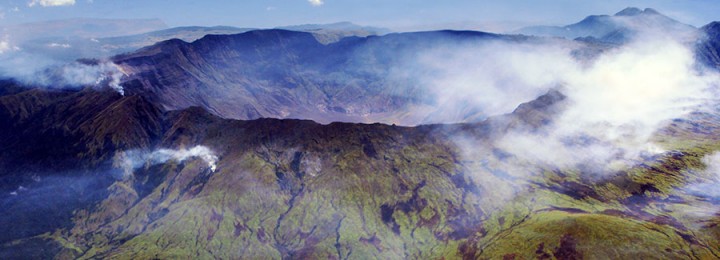Climate science
-

The rainy conditions we’ve been having this week can be attributed in part to the El Nino which is currently underway in the Eastern Pacific Ocean and is expected to continue for the next few months. You might be wondering what other agricultural impacts are likely in an El Nino year. The folks at AgroClimate.org…
-

The rain in the Southeast this week has cut down the amount of pollen in the air by quite a bit this week. Trees are leafing out, which means that the pollen-bearing flowers are dropping off. But there are plenty of other sources of pollen still to come. You can see a list of common…
-

One of the consequences of the continuing drought in California has been the unprecedented string of extremely high temperatures that have occurred in the last few years. Normally a portion of the sun’s energy that hits the earth goes to evaporating water from the surface, either from soils or water bodies or indirectly through evapotranspiration…
-

The Pacific Decadal oscillation, or PDO, is a long-term oscillation in Pacific Ocean temperatures. It is one of several known swings in ocean temperature between two phases, a “cold” phase and a “warm” phase. The most well-known natural oscillation like this is the El Nino-Southern Oscillation, which changes phase every 3-5 years. The PDO is…
-

Have humans already changed the climate of earth? As Cliff Mass of the University of Washington describes in his blog this week, “The answer is emphatically yes.” But the changes are due to much more than just the addition of greenhouse gases like carbon dioxide into the atmosphere. Our changes also have to do with…
-

April 2015 marks the 200th anniversary of the most powerful volcanic eruption in modern times, the eruption of Mount Tambora in Indonesia. This eruption is discussed in awe in climatology classes because of what we now know about the impacts of volcanic activity on climate–it depresses global temperatures for up to five years after a…
-

The South Atlantic LLC announced a new online module on climate change impacts on grasslands and forests late in March. This module goes along with another one on climate change science that was produced earlier. You can read the official release here and visit the website with the two modules at https://www.fs.usda.gov/ccrc/climate-basics/education. Don’t forget that there…